The Influence of External Stress on the Cycle Life of Battery Cell
The charge-discharge cycle process of lithium-ion batteries is a complex physical and chemical reaction process, and there are many factors that affect the cycle life. On the one hand, it is related to the characteristics of the battery itself, such as material characteristics, electrode design, and battery manufacturing process; on the other hand, it is also related to the external influence of the battery during use. This article is mainly to find the most suitable conditions for the battery cycle life from changing the external pressure, which can provide certain guidance for the use of batteries and mold PACK.
1.Experimental Equipment and Testing Methods
1.1Experimental Equipment: In-situ swelling analyzer, model SWE2110 (IEST), as shown in the following figure.
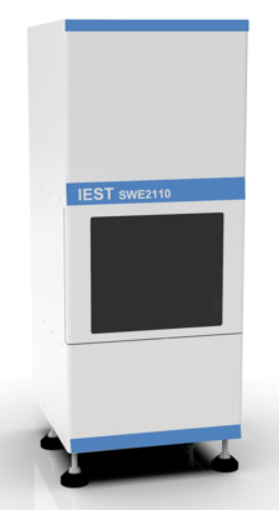
SWE2110 Equipment Appearance
1.2 Test information and Process
1.2.1 The Cell Information is Shown in Table 1.
Table 1. Test Cell Information

1.2.2 Charge and Discharge Process
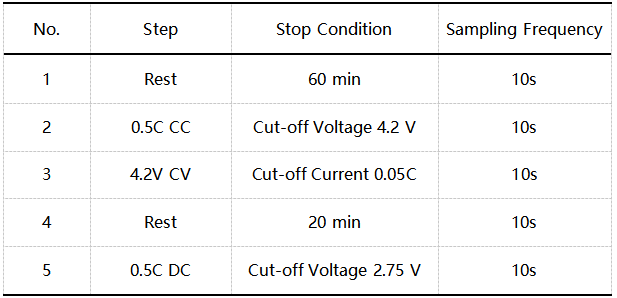
1.2.3 Experimental Procedure
Cell thickness swelling test: Put the battery to be tested into the corresponding channel of SWE2110, open the MISS software, set different test pressure, sampling frequency, charge and discharge process, etc., the software will automatically read the cell thickness, thickness variation, test temperature, current, Voltage, capacity and other data.
2.Experimental Results and Analysis
The in-situ swelling analyzer (SWE2110) turns on the constant pressure mode, and the pressure is set to 5.0kg, 10kg, 25kg, 50kg, 100kg, 200kg, and after holding the pressure for 1 hour, charge and discharge the battery cell, and monitor the thickness change in the whole process in-situ. As shown in Figure 2, during the entire cycle, due to the phase transition of the positive and negative materials for intercalation and deintercalation of lithium, the overall battery cell presents a tendency of charge expansion and discharge contraction. This is mainly due to the reciprocal and reversible volume change of the silicon-carbon negative electrode, which expands after intercalating lithium, and recovers volume after delithiation.
Under different pressures, the thickness of the cell is different. As the external pressure increases, the maximum thickness of the cell gradually decreases. External pressure increases the relative density and contact area between the active material and the separator, which not only minimizes the interfacial resistance, it can also ensure uniform current distribution during charging and discharging, so the degree of attenuation of the cell cycle life under different pressures is also different. Under the same pressure, the maximum expansion of each cycle of the cell increases continuously with the number of cycles, which indicates that there is irreversible expansion of the cell during the charging and discharging process, and as the number of cycles continues to increase, the amount of irreversible expansion has also increased (extract the initial thickness of charging and the end thickness of discharging in each cycle, and calculate the difference between the two thicknesses to be the irreversible expansion thickness).
Figure 3 shows the change of irreversible expansion thickness with pressure: as the pressure increases, the irreversible expansion of the battery charge and discharge has a certain change, that is, the appropriate pressure helps to suppress the irreversible expansion. During the pressure switching process, the irreversible expansion has a sudden change point, and as the pressure increases, the sudden change is more obvious, which may be related to the difference in the time required for the battery to reach a stable state with the pressure switch. The irreversible expansion thickness is the formation of permanent plastic deformation and cracks in the process of lithiation/delithiation, mainly including the structural change of the anode material, the fragmentation and dissolution of the active material, and the growth and analysis of the SEI film due to various side reactions, and factors such as cell gas production.
Since this experiment uses a silicon-carbon anode, and the charge and discharge current is only 0.5C, the irreversible expansion in this experiment is mainly caused by the cracking of the anode material and the recombination of the SEI film. As cycling progresses, these side reactions and attenuation accumulate, resulting in an irreversible increase in the thickness of the cell.
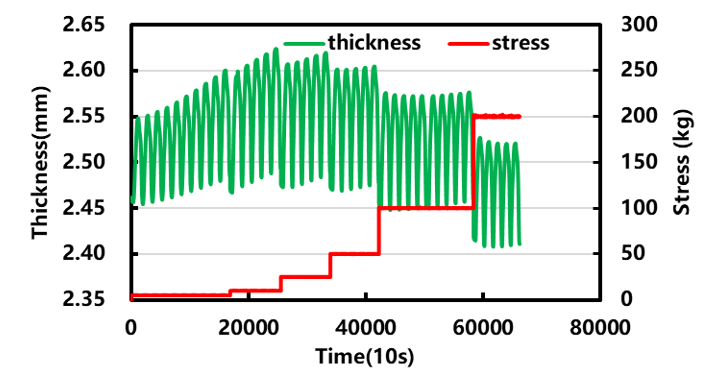
Figure 2.The thickness change curve of the cell under different pressure cycles
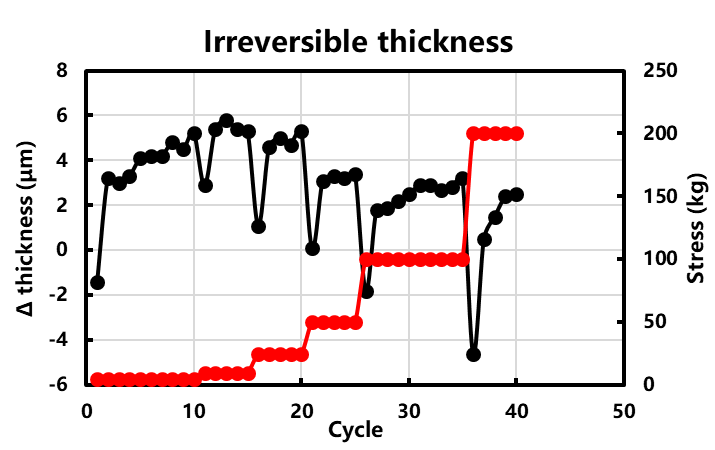
Figure 3. Irreversible thickness variation curve of the cell
Proper external stress can increase the interfacial contact, reduce the loss of active lithium during cycling, and slow down the fading of battery capacity. At the same time, the positive and negative electrodes and separators of lithium-ion batteries are all porous structures. As the pressure increases, the parameters such as the porosity and tortuosity of the electrodes and separators will change accordingly, affecting the diffusion of Li+, resulting in capacity decay [1]. Pressure affects the electrical contact resistance, porosity, and effective surface area of the electrodes, as well as the morphology of the separator. Therefore, external compression on the cell can affect electrochemical performance, including cycle life.
Extract the discharge capacity of the cell under different cycle numbers at each pressure point, and perform linear fitting on it,the results are shown in Figure 4: with the increase of pressure, the slope of the linear fitting curve of the cell capacity increases first and then decreases, that is, the discharge capacity decay rate presents a trend of first decreasing and then increasing. The effect of mechanical stress on batteries has been studied a number of times and has clearly had a significant impact on battery performance. Applying some pressure to the cell helps to reduce irreversible expansion and maintain cell performance for graphite and silicon-based anodes. However, applying too high a stress on the cell can negatively affect capacity retention.
Studies have shown that the measured initial battery thickness is about 5-15% higher than the theoretical thickness, and this difference is mainly due to the swelling of the binder and separator caused by electrolyte filling, formation of gas, and voids at the electrode interface. External pressure can reduce the interfacial voids of the electrodes and increase the contact area. Therefore, the battery will be compressed under a small pressure, and the thickness will be reduced, thereby reducing the contact resistance and improving the battery cycle performance. When the pressure continues to increase, the porosity and tortuosity of the electrode and separator will change and affect the Li+ diffusion, resulting in faster capacity decay. The capacity attenuation of the cell is the smallest under the external stress of 50kg~100kg, that is, this pressure is the best external pressure for the cell.
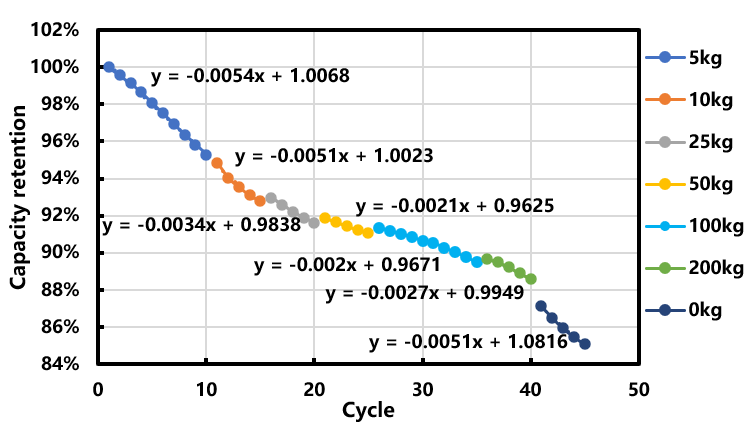
Figure 4. The decay curve of each pressure capacity of the battery cell
3.Experimental Equipment and Test Methods
In this paper, the in-situ swelling analyzer (SWE) of IEST was used to explore the optimal cycle external stress conditions of LCO/Sic system cells. When the cell is subjected to a long cycle under the external stress of 50kg~100kg, its capacity attenuation and irreversible cycle expansion are the smallest, which also provides relevant technical personnel with an idea to improve the cycle of silicon-based system cells, and further enhance the practical application of silicon-based systems.
4.Reference Materials
[1] A.S. Mussa,M. Klett,G. Lindbergh, and R.W. Lindstrom, Effects of external pressure on the performance and ageing of single-layer lithium-ion pouch cells. J. Power Sources 385 (2018) 18-26.
[2] D.J. Li, D.L. Danilov, J. Xie, L. Raijmakers, L. Gao, Y. Yang and P.H.L. Notten, Degradation Mechanisms of C6/LiFePO4 Batteries: Experimental Analyses of Calendar Aging. Electrochim. Acta 190 (2016) 1124-1133.
